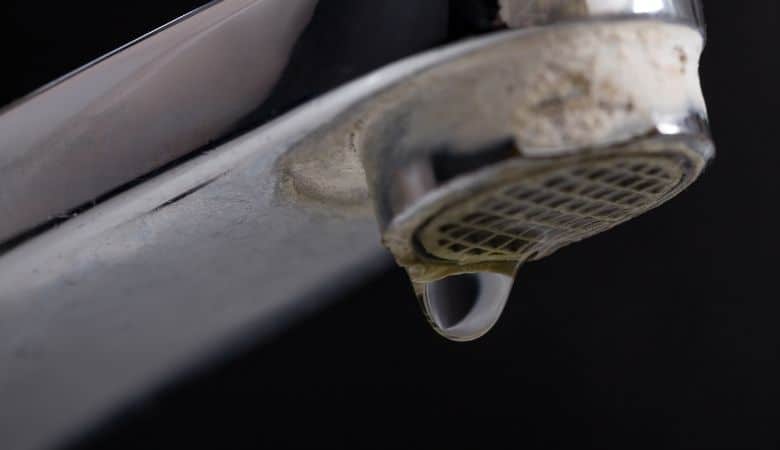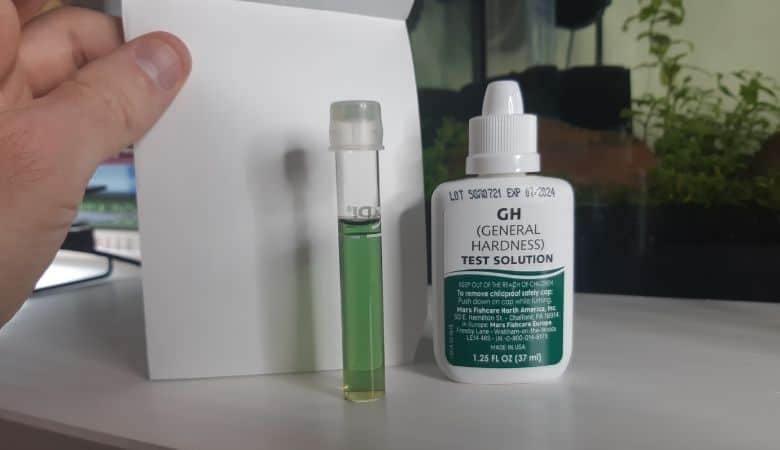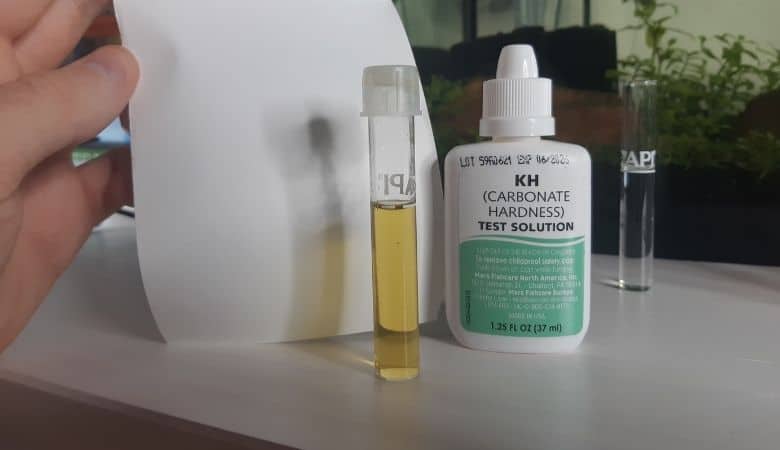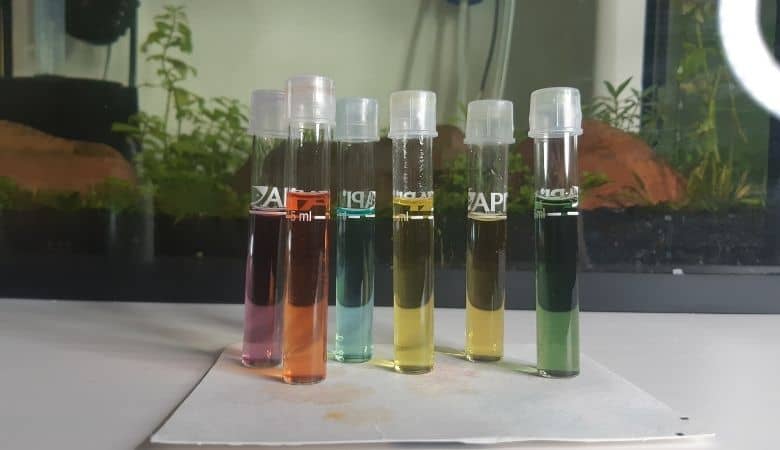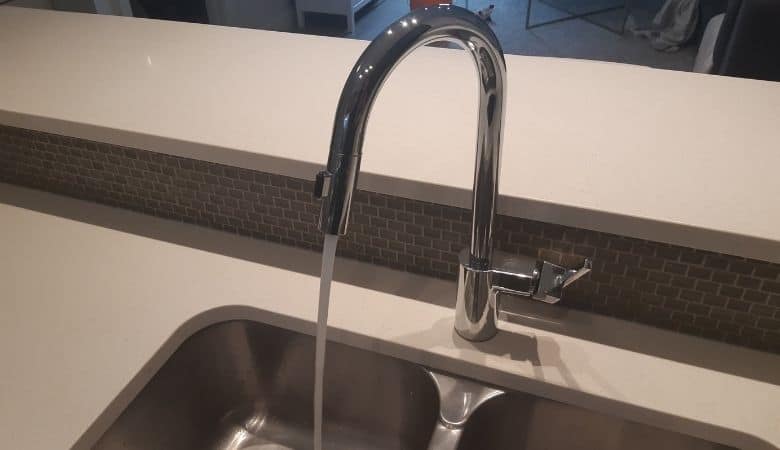Some people might not know it, but the hardness of your aquarium water is a very important factor in determining how well fish and aquatic plants can survive.
You can increase your aquarium water hardness by adding crushed coral, using hard tap water, or by using remineralization products such as Seachem Equilibrium. It’s best to make these changes before adding fish to avoid fish loss.
In this article, you will discover natural, popular and avoidable methods for increasing the general hardness (GH) and carbonate hardness (KH) in your freshwater aquarium.
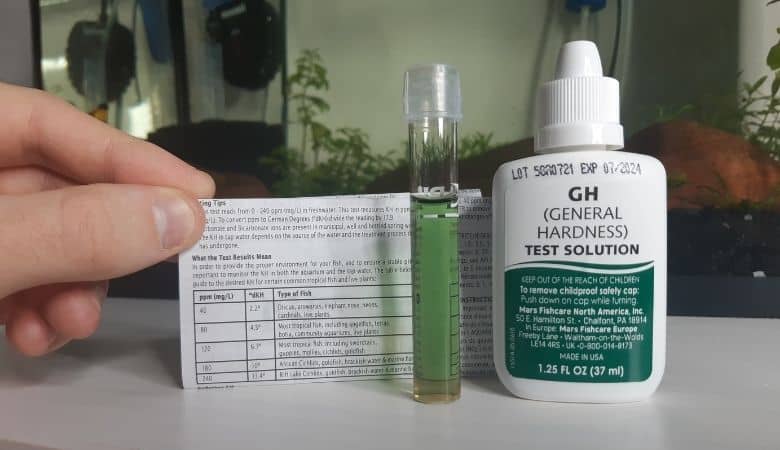
Contents
- 1 How to naturally increase aquarium water hardness
- 2 Do you need to replace crushed coral in an aquarium?
- 3 Popular methods for increasing aquarium hardness
- 4 The quickest method to safely increase aquarium hardness
- 5 Methods to avoid
- 6 How to raise general hardness (GH) without raising KH
- 7 How to raise carbonate hardness (KH) without raising GH
- 8 How to raise aquarium hardness without raising pH
- 9 Do wonder shells increase water hardness?
- 10 Risks of raising aquarium hardness
- 11 Tips when attempting to increase your aquarium hardness
How to naturally increase aquarium water hardness
Use your tap water if it’s hard
Some aquarists can increase their aquarium water hardness by using dechlorinated tap water instead of RO or distilled water. Some regions sources water with limestone, which adds minerals to the waterand increases hardness.
Based on the map below, you’ll notice that many people naturally have hard water. This is usually true for geographic regions that source their tap water from rivers with limestone.
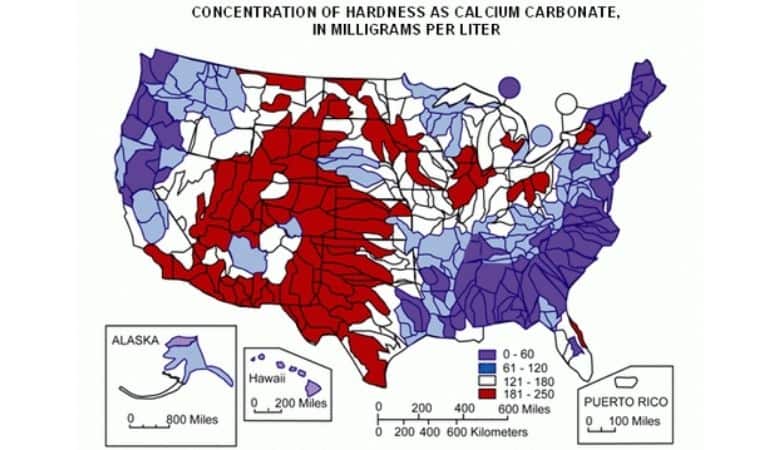
Regions that source their water from lakes generally have softer water with fewer minerals.
Sometimes people chose to start their aquarium using RO water or distilled water, which has a minimal amount of water hardness.
For these people, it’s worth testing your local tap water to see if it has more hardness than your current aquarium water source.
My water has 8.2 pH, 7 dKH and 13 dGH, which is considered “hard” to “very hard.”
| dGH or dKH value | GH or KH parts-per-million (ppm) |
| 1 | 17.9 |
| 2 | 35.8 |
| 3 | 53.7 |
| 4 | 71.6 |
| 5 | 89.5 |
| 6 | 107.4 |
| 7 | 125.3 |
| 8 | 143.2 |
| 9 | 161.1 |
| 10 | 179.0 |
| 11 | 196.9 |
| 12 | 214.8 |
Search your city’s water report and conduct a water hardness test on your tap water.
Add crushed coral or other mineralized substrates
Crushed coral can be used to increase an aquarium’s pH, KH and GH. It erodes and released calcium and carbonates, which raise general hardness and alkalinity.
It’s made of coral pieces, limestone, and shell fragments, among other compounds. These materials contain calcium, magnesium and other minerals that increase an aquarium’s GH and KH.
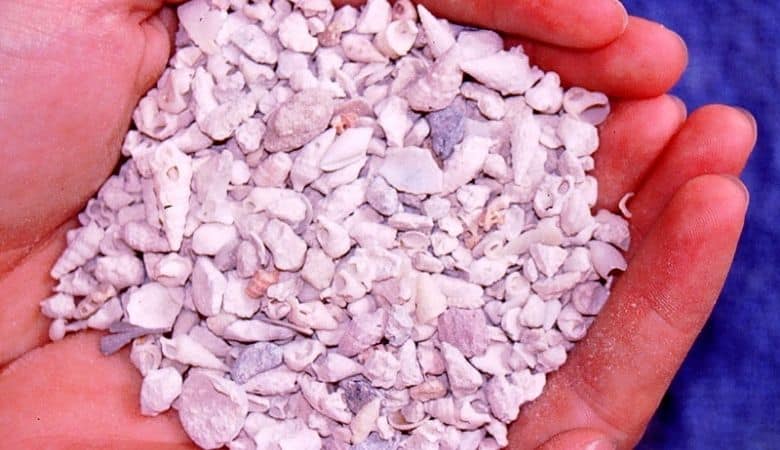
There are also other similar substrate alternatives, such as aragonite and dolomite, that have similar mineral compositions.
These substrates can be sprinkled into your aquarium directly, added into your filter media, or placed inside a media bag.
Natural acids in your tank water will slowly dissolve the substrate, releasing carbonate ions and calcium into the water.
Do you need to replace crushed coral in an aquarium?
Crushed coral will erode and deplete its calcium and carbonate over time. Eventually, it will need to be replaced to sustain an aquarium’s pH, alkalinity and hardness.
The amount of time before replacing will depend on the volume of your aquarium water, the amount of crushed coral you added, among other factors.
It’s best to regularly measure your aquarium’s pH, KH and GH levels. It may be time to consider replacing your crushed coral when you notice your pH changing.
It’s better to replace it before this happens because fluctuating water quality will cause fish stress.
Popular methods for increasing aquarium hardness
Raise GH with an aquarium remineralizer
Seachem Equilibrium is a reputable and safe product for raising your aquarium’s general hardness.
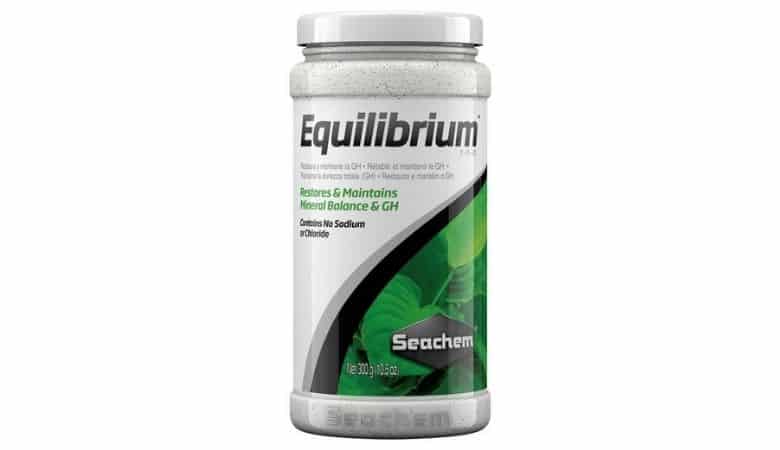
This product contains primarily potassium sulfate, calcium sulfate and magnesium sulfate, which are important minerals for plant and fish health.
What I like about this product is that it does not contain sodium chloride, which is a common and inexpensive additive in many competing remineralizing products.
Sodium chloride acts as an electrolyte for aquarium fish, which is beneficial. However, it’s not ideal if your aquarium also contains live plants.
Equilibrium is best used for reverse-osmosis (RO) water that contains no general hardness. But it can also be used in moderation to raise the GH of soft tap water.
Raise KH with an alkalinity additive
Seachem offers another great product called Alkaline Buffer. It is a sodium bicarbonate-based product that increases the KH of your aquarium water.
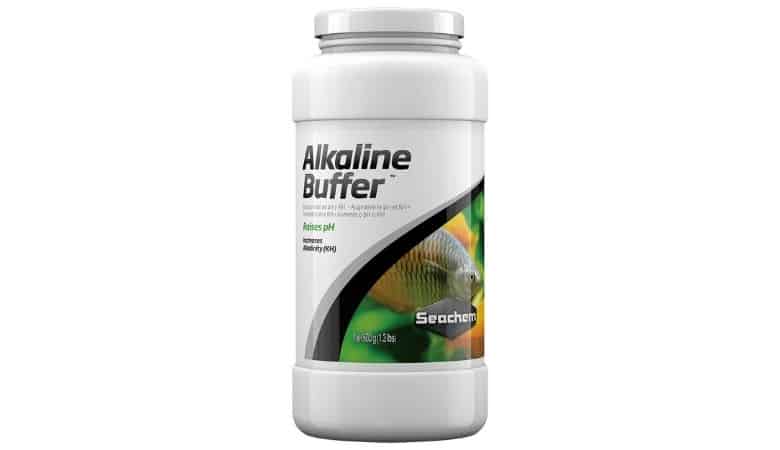
The quickest method to safely increase aquarium hardness
Using chemical additives, such as Seachem’s Equilibrium and Alkaline Buffer, will allow you to quickly raise your aquarium KH and GH. However, it’s not advised to change your water chemistry if fish are in the tank.
Many freshwater fish are resilient and will adapt to a wide range of water parameters. But few will tolerate rapid changes.
Therefore, it’s best to adjust your water parameters before adding fish.
If you are trying to change parameters with aquarium fish, make small incremental changes over a couple of months to prevent stress and disease.
Methods to avoid
Baking soda
Some people suggest using baking soda to increase KH because it contains sodium bicarbonate.
The bicarbonate is what helps the aquarium water resist pH swings.
The sodium causes moisture to be sucked out of plant tissue, causing dehydration. Therefore, baking soda is generally not recommended for increasing KH, especially for planted tanks.
Epsom salt
Epsom salt is a popular choice for increasing general hardness because it does not increase KH or pH. It is also useful for treating constipation and swim bladder disease in fish.
The problem is that fish are not recommended to remain in Epsom salt treatments for prolonged periods. This makes it an understandably tricky method for increasing GH if you’re keeping fish.
Also, Epsom salt does not contain calcium, which is an important part of water hardness.
When you measure your aquarium’s GH, you’re measuring the concentration of calcium and magnesium ions.
Calcium is important for bones development in fish and cell structure in aquatic plants.
Magnesium, along with iron, is responsible for developing a plant’s chlorophylls, which are what plants use to absorb energy from light.
Both nutrients are important for healthy plants and fish, but a calcium-to-magnesium ratio of 2:1 or 3:1 is considered best for aquariums.
As a result, Epsom salt will possibly cause calcium deficiencies or non-ideal calcium and magnesium ratios.
How to raise general hardness (GH) without raising KH
Adding Seachem Equilibrium will raise GH without raising KH or pH. This is because it does not contain buffering agents or acids.
How to raise carbonate hardness (KH) without raising GH
Seachem Alkaline Buffer will raise an aquarium’s KH and pH but will not raise the GH because it does not contain calcium or magnesium.
Most other methods of raising KH will also increase KH. For example, crushed coral and aragonite contain calcium and will raise KH, pH and GH.
How to raise aquarium hardness without raising pH
The most reliable method for increasing aquarium hardness without increasing pH is by using RO (reverse osmosis) water. RO water has no dissolved minerals, so it will not raise your pH.
You can also use distilled or de-ionized water instead of tap water, for the same effect.
You would then need to remineralize the water with GH products such as Seachem Equilibrium and KH products such as Seachem Alkaline Buffer, but also use something like Seachem Acid Buffer to prevent pH increase.
Alkaline Buffer converts carbonates from your KH into CO2, which will reduce your pH.
These products in combination, when used correctly, will balance each other and allow you to achieve the desired KH, GH and pH.
I recommend doing this before adding fish to make sure you learn how to dose properly.
Do wonder shells increase water hardness?
Wonder Shells increase an aquarium’s general hardness but do not increase the KH or pH. Your tank’s pH will affect how quickly they dissolve and increase the general hardness.
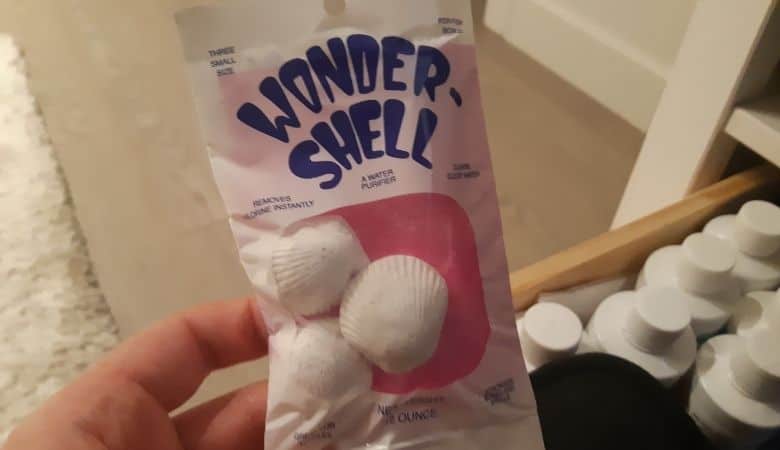
Risks of raising aquarium hardness
Some fish don’t do well in high GH
Consider which fish species you intend on keeping before raising your GH.
Many freshwater fish species, such as tetras, angelfish, and gouramis thrive in soft water conditions. Other species like platies, guppies, mollies and African cichlids do better in hard water.
Some plants do not thrive in hard water
Plants generally grow better in soft water, but can certainly grow well in hard water as well. They are much less sensitive to water hardness than fish.
However, if your KH is too high it will also raise the pH, which is a problem for many plants.
High pH nutrients cannot dissolve when the pH becomes too high. As a result, sensitive plant species often struggle to thrive in high pH water.
Plants that grow well in high pH include water wisteria, hygrophila polysperma, staurogyne repens and most cryptocoryne species.
Tips when attempting to increase your aquarium hardness
Do it before adding aquarium fish if possible
Just about every fish species is sensitive to water parameter fluctuations. It’s not recommended to attempt changing your hardness or other parameters if you’re not experienced.
It’s better to adjust your water chemistry before adding fish.
Increase hardness slowly
If you decide to increase water hardness with tropical fish in the tank, make sure you do it slowly over a couple of months.
This will allow your fish to adapt to the change more successfully without causing stress.
Consider why you are trying to increase hardness
It’s good to increase if it’s too low to sustain healthy plants and fish.
It’s bad if it’s simply to sustain specific plants or fish. Find aquatic life that meets your local water source instead. It’s easier and will cause fewer problems.


